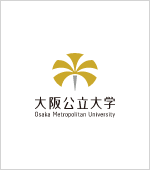トーマスジェファーソン大学(Thomas Jefferson University)Report
Thomas Jefferson University Study Report
Kazuya TAKIUE

- Country
- Japan
- School
- Osaka City University
- Elective period
- 28th July to 4th August 2023
First of all, I would like to thank our school's Academic Affairs Division, the International Exchange Committee, the local coordinators, and the medical staff and medical students who helped me at Thomas Jefferson University for their efforts. Through this program, I was able to recognize things that I would never have realized if I had participated in hospital training in Japan. I would like to share some of them here.
When I attended the rounds, I was amazed at the amount of conversation that took place. The team I joined consisted of four doctors and three medical students including me. We spent about 20 minutes in front of the patient's room discussing a patient's current medical condition and future plans, followed by about 10 minutes communicating with a patient (we spent 3 hours making rounds with about 10 patients). The discussion consisted of presentations by fellow physicians and medical students to attending physicians. This format is the same as rounds in Japan, but I felt the density of the discussion on specific plans until discharge and how to control the patient's condition after discharge was greater than at Japanese conferences. It may go without saying that close cooperation among medical staff, represented by the amount of conversation, is good for patients. I also got the impression that the time before moving on to the next patient's room was spent chatting about what they had done over the weekend and what the news was about, which gave me a very friendly impression.
Thomas Jefferson University has a student-led volunteer organization called JeffHOPE. I visited Eliza Shirley, a shelter for women and children who are uninsured or economically poor. Two students interviewed and listened to visitors to the shelter, just as we would do in an outpatient clinic at a university hospital. The students were providing information to them about their symptoms. In my eyes, they already looked like doctors. I keenly realized that although we are the same students, I still lack practical experience compared to them. I was impressed by the detailed history interview and physical examination carefully performed in a restricted environment without x-ray or echo equipment.
In addition to the hospital training, we also visited the Mutter Museum, also known as the Medical Museum. There, Einstein's brain, human specimens, and the history of mankind's struggle against the influenza virus were on display. Unfortunately, photography was prohibited, but the models of human bodies suffering from infectious diseases such as smallpox, rare diseases even today, and paintings of people suffering from plague were deeply etched in my memory.
Witnessing the American medical scene and interacting with people involved in hospitals was an asset for me. I will never forget the inspiration I gained from this study abroad experience, and I will do my best in my clinical clerkship starting in the fall.